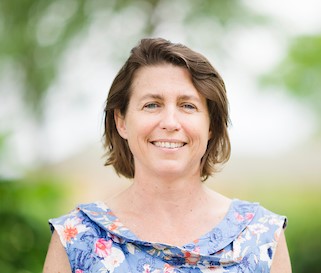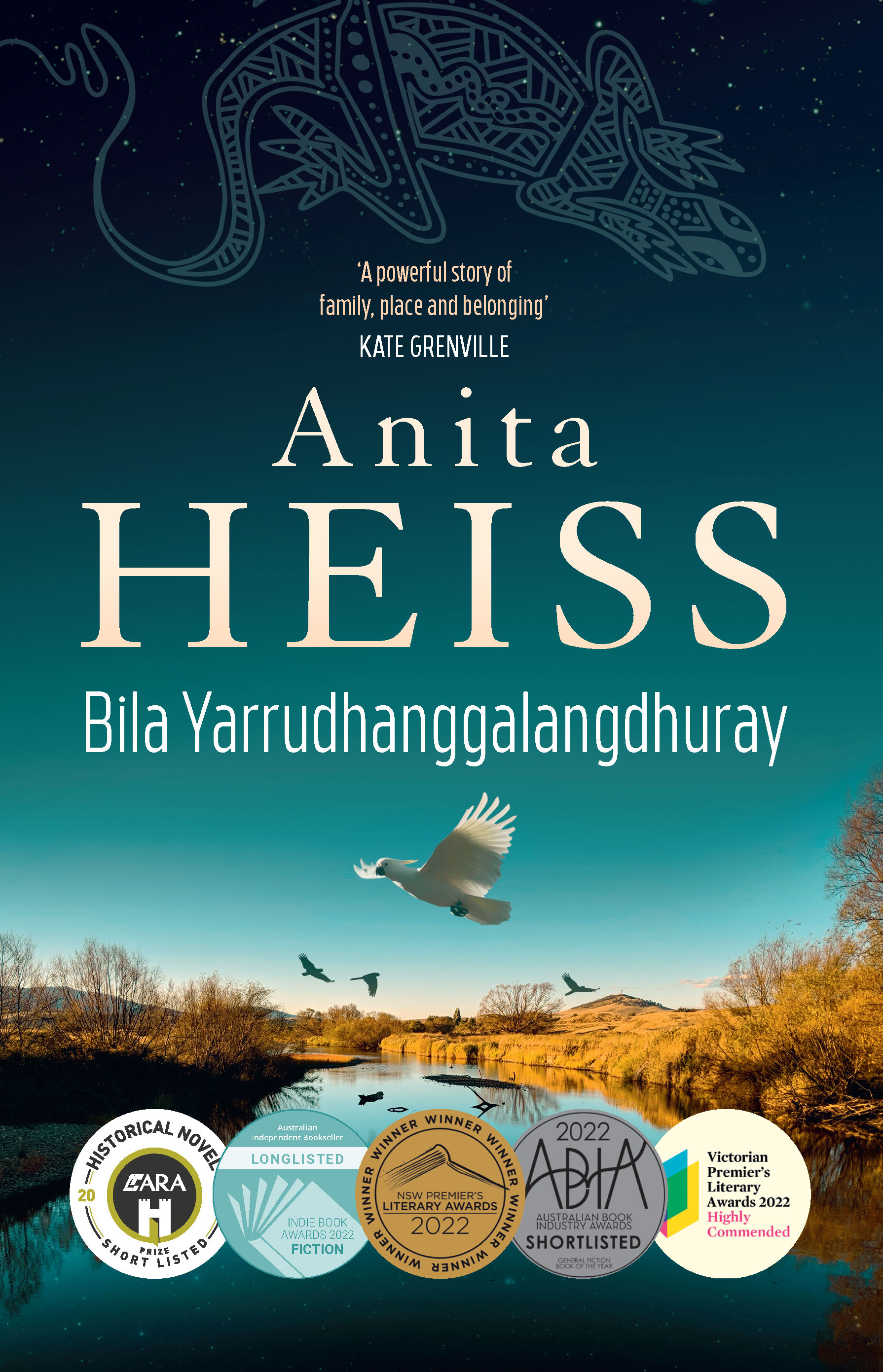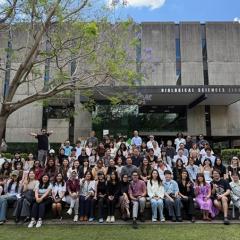Upstairs, through a quiet corridor in UQ’s Joyce Ackroyd building, lies a literary world like no other. It is a place where Eli Bell sits alongside the Kelly Gang, somewhere along the River of Dreams. This is AustLit – one of the world’s largest literary databases, hosting more than a million bibliographical records and adding thousands more each year.
Though much of its work goes unrecognised, AustLit’s cultural significance is unmatched. It has documented the vast majority of Australia’s modern literary history and connected countless authors, researchers, and historians – even reuniting long lost family members in the process.
Research News visited AustLit’s office at St Lucia, in Brisbane’s inner southwest, where a small team of incredibly passionate quiet achievers keep Australia’s most important literary resource alive and thriving.
Its director, Associate Professor Maggie Nolan, took over the reins in June 2023 with a goal to build relationships and increase global awareness about AustLit’s work. Between research projects, grant-seeking and community engagement efforts, the industrious team of five spend their days updating a vast ongoing record of new authors, publishers, award winners, stage performances, and international rights sales.

AustLit has a deep connection with Australia’s First Nations authors through its BlackWords initiative, which provides access to an incredible record of Aboriginal and Torres Strait Islander writers and their publications. It is the cornerstone of AustLit’s work.
“AustLit officially launched BlackWords in 2007 by Uncle Sam Watson with Dr Jackie Huggins as a specially curated ‘database within a database’, which affiliates Aboriginal and Torres Strait Islander storytellers with their stories throughout the entirety of the database using the BlackWords logo – a symbolic, cyclical representation of Indigenous people and their cultural connections to land, language, stories, and voices.”
This initiative has not only been successful at cataloguing some of Australia’s finest literary works and achievements, but also at supporting people to find out more about their loved ones.
“It’s not uncommon to get emails from people who have been separated from family members and have found life stories listed on AustLit, especially on BlackWords,” Associate Professor Nolan said.
“We can tell people where they can find the life stories that we list, and hopefully help them find a bit more information about their families that way.”
Among the pioneers who have championed BlackWords over the years is UQ Professor Anita Heiss AM, author of Bila Yarrudhanggalangdhuray (River of Dreams).
Associate Professor Nolan said Professor Heiss was critical to the development and success of BlackWords, and – like many of Australia’s much-loved authors – she continues to support the database.
“Professor Heiss has maintained a warm and reciprocal relationship with the AustLit team through her tireless support and fundraising for Indigenous literacy, and putting First Nations stories front and centre,” Associate Professor Nolan said.
“Australia has a long and rich tradition of storytelling, and over generations this has evolved and shaped the diverse literary culture we celebrate today.”

AustLit’s cultural significance has innate and wide-reaching roots.
“Millenia of stories are embedded in land, sky, and sea going back 60,000 years to now, and in the future, of Indigenous culture and heritage,” Associate Professor Nolan explained.
There is a complex network of spreadsheets and calendars that keep AustLit’s updating schedule on track.. The process tracks the output of over 400 publishers and other “agents”, as they’re referred to, in real-time.
“This is a living document,” Dr Catriona Mills, AustLit’s Content Manager. said.
“We’re constantly adjusting to add new publishers, and remove ones that no longer operate.
“Last month, the DANZ Children’s Book Award longlist, the Dublin Literary Award longlist, and the British Science Fiction Awards longlists all contained Australian authors, so we’ve been checking notifications of rights sales.
“Our work is done directly on the database: if an award is announced, we will add that information directly to AustLit. It means AustLit’s content is updated daily.”
If that wasn’t busy enough, the team also answers regular queries from the database’s users. They receive dozens of emails a day – some with quite unexpected outcomes.
“Someone contacted us to say they’d found a credit card in a supermarket carpark, googled the name, and found that person listed on our database,” Associate Professor Nolan said.
“We don’t keep author contact details, but their record told us this person was an active member of a writing group that had a public event that night, just down the road from where the person who found credit card lived.”
“So, they popped along, and were able to reunite the person and the credit card.”
Many of the more usual queries are from academics working on research projects, or authors, teachers or librarians looking for information.
AustLit first emerged in 1998 as a collaboration between Australian university libraries and the National Library of Australia. Initially, it aimed to merge a range of disparate bibliographical and other research datasets and databases that had been under development, in some cases, since the 1970s.
The team back then wanted to develop one central database and grow the resource. It eventually became available online in September 2001, and has been led by UQ since 2002.
“If you’re an Australian literary scholar, AustLit is indispensable to your work,” Associate Professor Nolan said.
“It has shaped the field, and it is hard to imagine what the field would look like without it.
“AustLit is the definitive – the only – database that allows scholars and educators to deep dive into the Australian literary field to construct complex searches and extrapolate rich swathes of data with exceptional granularity. Researchers from around the country partner with AustLit on large funded research projects in order to expand and even reconceptualise Australian literary history and culture.
“But AustLit is not only a research tool, it is also highly valued by the reading and writing community more generally, including librarians, teachers and students, writers, even members of book clubs for whom AustLit is a must-have resource.”
AustLit’s users can access the database to conduct any number of weird and wonderful database searches – such as a list of Australian zombie novels set in Melbourne that became films, for example.

Bila Yarrudhanggalangdhuray (River of Dreams) by Professor Anita Heiss AM.
“It’s no understatement to say that to lose AustLit is to risk losing one of Australia’s largest and longest-running cultural heritage and digital humanities projects, and a vital piece of our nation’s digital research infrastructure,” Associate Professor Nolan said.
That is why she is so passionate about growing AustLit’s reach internationally.
With a successful webinar taking place in China last year and a virtual presentation to India in February this year, she hopes that more institutions such as libraries, schools, and universities worldwide will be encouraged to subscribe to the database so that more people can have access to Australia’s unique and iconic literary heritage through the simple click of a button.
The team also aims to gain further funding so that 19th-and early 20th-century Australian fiction – which was only ever serialised in newspapers rather than novels – can be catalogued in AustLit and made readily available to users.
“The biggest issue for AustLit is financial sustainability,” Associate Professor Nolan said.
“A piece of digital research infrastructure this size and scope costs money. We would love to see AustLit be more widely available, but subscription fees are needed to provide a specialised team of indexers and software engineers who maintain and build on the existing site. AustLit’s system is custom-built and the longest it’s ever been down for is 24 hours, and that was during the 2011 floods – an enviable statistic.
“Balancing the sustainability and accessibility feels like a wicked problem.
“In many ways, it would be a dream come true to see AustLit proudly housed at UQ and sitting safely on robust national digital infrastructure, available for everyone to use, as part of the investment that this country makes in its past and for its present and future.”
Anyone interested in subscribing or donating to AustLit should visit https://www.austlit.edu.au/about.
By Chris Clarke



